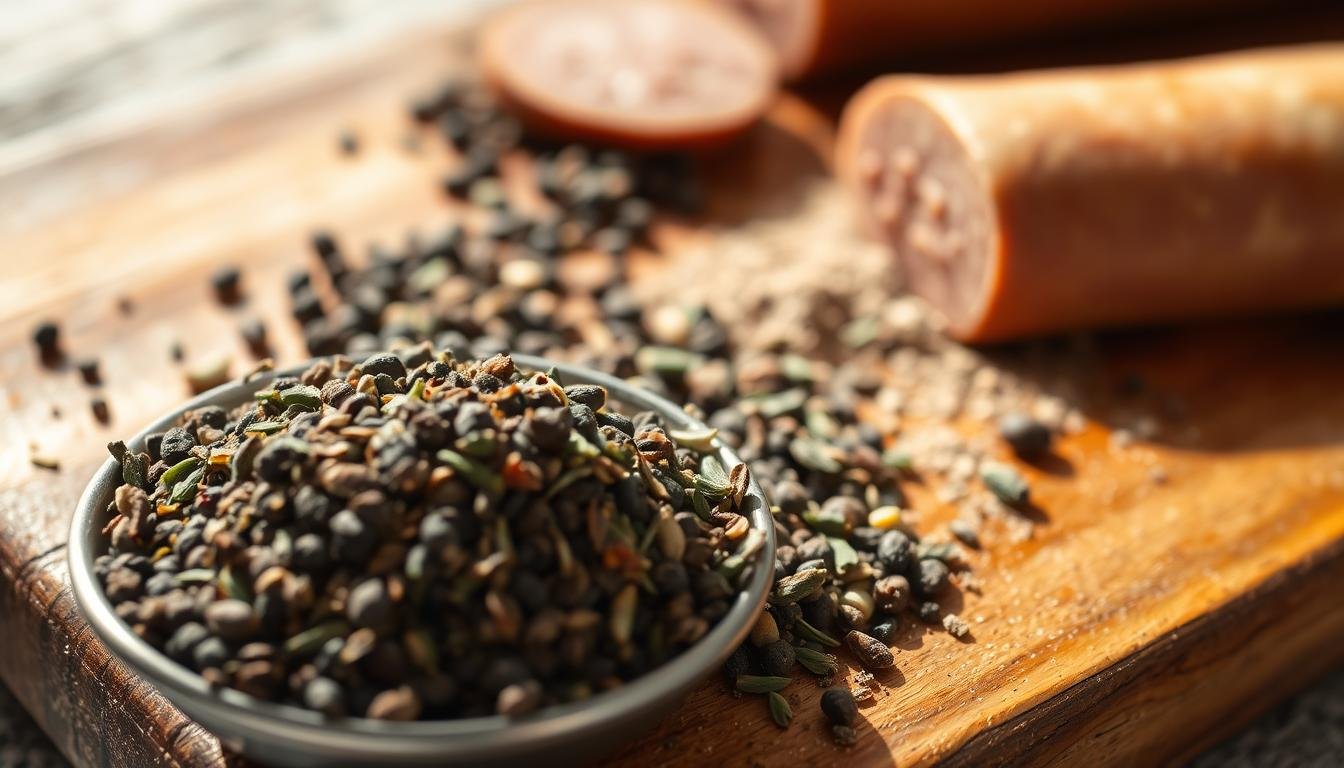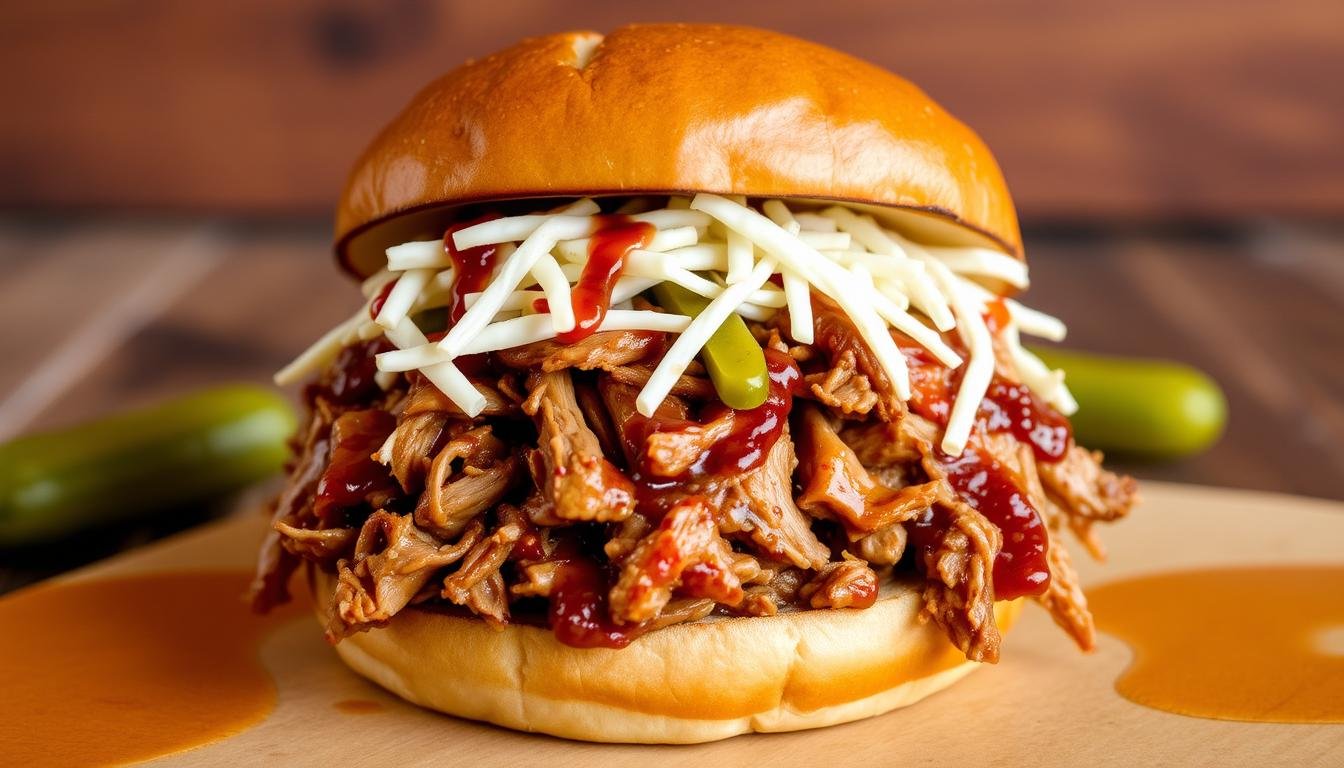Alaska is full of unique plants, many used by Indigenous communities. The white spruce (Picea glauca) is a common tree here. Its needles are often made into tea for their health benefits. But, is white spruce safe to make tea with in Alaska?
We will look into the safety, health perks, and cultural value of white spruce tea in Alaska. We’ll use both traditional knowledge and science to understand its role in the ecosystem. This exploration will help us determine if white spruce is safe to make tea with in Alaska and uncover its potential as a natural remedy.
Key Takeaways
- White spruce is a common tree species in Alaska with a long history of traditional use by Indigenous communities.
- Spruce needles can be brewed into a tea, but there are safety considerations to be aware of.
- The tea may provide health benefits due to its rich vitamin C, antioxidant, and antibacterial properties.
- Proper foraging and harvesting practices are essential to ensure the sustainability of white spruce populations.
- White spruce tea holds cultural significance and can be incorporated into Alaskan cuisine and traditional remedies.
White Spruce in Alaska’s Ecosystem
The white spruce is a key player in Alaska’s forests. These trees are vital for the health and variety of life in Alaska. They help keep the ecosystem balanced by storing carbon and improving soil.
Ecological Significance of White Spruce
White spruce trees are important for many animals in Alaska. They offer food and shelter for creatures like moose, bears, and birds. Their roots also help keep the soil stable, preventing erosion.
These trees are also crucial in the fight against climate change. They absorb carbon from the air, helping to keep our planet cool.
Cultural and Traditional Uses of White Spruce
For Alaska’s Indigenous people, the white spruce is more than just a tree. Its needles, bark, and resin are used in traditional medicine. The wood is used for building homes and tools.
In some cultures, the white spruce is seen as sacred. This shows its deep importance to the region’s people.
| Ecological Role | Cultural Significance |
|---|---|
|
|
The white spruce is vital for Alaska’s forests and its people. It keeps the ecosystem balanced and holds spiritual value. We must protect this tree to preserve Alaska’s natural beauty.
Is White Spruce Safe to Make Tea With in Alaska?
Yes, white spruce (Picea glauca) is safe for tea in Alaska. But, remember a few things.
Health Benefits of White Spruce Tea
White spruce tea is good for you. It has lots of vitamin C. This vitamin boosts your immune system and helps get rid of toxins.
The tea also has terpenes like limonene. These help with coughs and congestion by breaking down mucus. Plus, spruce tips fight bacteria and have minerals like potassium and magnesium.
Risks and Precautions
White spruce tea is mostly safe. But, some people might be allergic. Start small and watch for any bad reactions.
Pregnant or nursing women should talk to a doctor first. The safety for them is not clear.
Sustainability and Ethical Harvesting
It’s key to harvest white spruce responsibly in Alaska. Don’t take too much from one tree. Instead, take a few tips from different trees.
This way, the trees can grow back. By harvesting right, we can enjoy the tea and protect the trees.
“Spruce tips are packed with vitamin C, which may help remove toxins from the body and strengthen the immune system.”
How to Make White Spruce Tea Safely
Making white spruce tea is a fun way to enjoy its unique taste and health perks. By using safe methods to harvest and brew, you can enjoy white spruce without any bad effects.
Harvesting the Needles
When picking white spruce needles, choose the fresh, bright green ones from the top. These young needles have the most good stuff. Don’t pick old needles, as they can be tough and taste bitter.
Snip or pluck the needle clusters carefully, so you don’t hurt the tree. Rinse the needles well to get rid of dirt or bad stuff.
Brewing White Spruce Tea
To make a tasty cup of white spruce tea, put the clean needles in hot water. Don’t let it boil. Let it steep for 5 to 10 minutes.
Don’t steep it too long, or it will taste bitter. After it’s steeped, strain out the needles. You can drink it as is or add honey or lemon for extra flavor.
By following these steps, you can enjoy white spruce tea’s unique taste and health benefits. It’s full of vitamin C and antioxidants. Enjoy your homemade spruce tea and feel connected to nature.
Spruce Tea Brewing Techniques
Making a tasty spruce tea needs some skill. Cutting the spruce needles into 1/2-inch pieces helps get the tea’s unique taste. Adding a few whole cloves can also make the flavor better.
The water’s temperature and how long you steep it matter a lot. A cooler water and shorter steeping make a light, refreshing tea. But, hotter water and longer steeping make a stronger, earthier taste. Try different times and temperatures to find what you like best.
- Chop spruce needles into 1/2-inch sections for better extraction
- Add whole cloves to the tea for an extra layer of flavor
- Adjust water temperature and steeping time to control the taste intensity
- Lower temp and shorter steep = more subtle, refreshing flavor
- Higher temp and longer steep = more robust, earthy taste
“Spruce tip beer was a key factor in the survival of sailors searching for a safer route between Europe and the Orient in the 1790s.”
By trying out these spruce tea brewing techniques, you can bring out the best in this special drink. You can choose a light, refreshing tea or a stronger, earthier one. It’s all up to you.
The Cultural Significance of White Spruce Tea
For many Alaska Natives, making and drinking white spruce tea is very important. It connects them to their land, ancestors, and indigenous traditions. They use it in ceremonies and share it with elders, seeing it as a key part of their culture.
The tradition of using white spruce (Picea glauca) for tea is deep in Alaska’s Indigenous culture. The light green tips are eaten raw or boiled for tea. They’ve been a big part of their traditions for centuries.
“Spruce tips are high in Vitamin C, chlorophyll, and carotenoids, as well as rich in minerals like potassium and magnesium. The window of opportunity to pick spruce tips generally ranges from the end of April through mid-May in Alaska, varying from region to region and year to year.”
It’s important to respect the cultural significance of white spruce tea in Alaska. By honoring these indigenous traditions, we help keep these ancient practices alive. This way, we can celebrate this special beverage for many years to come.
Spruce Tea as a Winter Remedy
White spruce tea is a favorite in Alaska’s cold winters. It’s full of vitamin C, which is great when fresh fruits and veggies are hard to find. This helps keep the immune system strong during the cold months.
Respiratory Benefits
Spruce tea also helps with breathing problems. The spruce needles have oils that can open up airways. This can help with sore throats, chest congestion, and coughs. Drinking this tea can keep your breathing healthy all winter.
Vitamin C Content
Spruce trees are packed with vitamin C. They have more of it than oranges. This makes spruce tea a great way to get more vitamin C in Alaska’s diet, especially when fresh produce is hard to find.
| Nutrient | Spruce Tea | Orange Juice |
|---|---|---|
| Vitamin C | 3-5 times higher | 1 cup |
Drinking spruce tea can help Alaskans stay healthy in the winter. It’s good for breathing and packed with vitamin C. This supports overall health and well-being during the cold months.
Foraging and Harvesting White Spruce Responsibly
Foraging and harvesting white spruce in Alaska needs to be done right. It keeps the white spruce healthy for the future. It also shows we care about the environment.
Sustainable Harvesting Practices
Here are some tips for collecting white spruce needles:
- Take only a few needles from a few branches. Don’t take too much from one tree.
- Collect needles when the trees are growing. This lets them heal and grow.
- Collect from many trees, not just one. This helps trees all around.
- Follow Leave No Trace rules and local laws. This keeps nature safe.
Using these foraging spruce alaska methods helps keep white spruce healthy. This way, future generations can enjoy it too.
Responsible sustainable harvesting spruce helps the environment. It also makes sure we have white spruce for building and medicine. By harvesting wisely, we help keep Alaska’s beauty for everyone.
“Sustainable harvesting is the key to ensuring the continued abundance of white spruce in Alaska’s wilderness.”
Using White Spruce in Alaskan Cuisine
The white spruce is used in many Alaskan dishes. Its young needles can flavor soups, stews, and pasta like rosemary does.
Spruce tips can be sautéed with veggies, mixed into pesto, or baked into treats. They can also flavor water, syrups, jellies, and even beer. This shows how versatile white spruce is in Alaskan cooking.
Spruce Syrup and Spruce-Infused Dishes
Making caramelized spruce syrup is a favorite in Alaskan cooking. It only needs 4 ounces to make and keeps for a month in the fridge. It adds a unique tart, fruity, and herbal taste to foods and drinks.
To make this syrup, you need 2 cups of spruce tips, 1 cup of water, and 1 cup of sugar. It cooks for 1 hour and sits for 1 day. The syrup has a tart, fruity, and menthol-like taste, making it a special ingredient in Alaskan dishes.
Incorporating Spruce into Alaskan Specialties
- Spruce tips can be sautéed with other vegetables, such as mushrooms or onions, to create flavorful side dishes.
- The spruce needles can be incorporated into pesto, adding a distinct and aromatic touch to pasta dishes.
- Spruce-infused baked goods, like cookies or breads, can offer a unique and unexpected twist on traditional Alaskan treats.
- The spruce needles can also be used to infuse water, creating a refreshing and subtly flavored beverage.
Exploring culinary uses of white spruce in Alaskan cuisine is exciting. It lets cooks and chefs celebrate this local resource. They can add depth and complexity to many dishes.
is white spruce safe to make tea with in alaska
Yes, white spruce (Picea glauca) is safe to make tea with in Alaska. But, it’s key to harvest and prepare it right. White spruce is a big deal in Alaska’s forests. It helps the local ecosystem and animals a lot.
White spruce tea is good for you. It has lots of vitamin C and helps with breathing. For a long time, Alaska’s Indigenous people used it for colds, coughs, and sore throats.
But, be careful and watch for any allergies. Some people might react to white spruce, especially if they’re allergic to trees. Pregnant or nursing women should talk to a doctor before drinking it. There might be some risks.
To enjoy white spruce tea safely, harvest it right. Pick fresh, healthy needles in the growing season. Don’t take too many from one tree. Rinse the needles well and steep them in hot water for 5-10 minutes.
| Benefits of White Spruce Tea | Potential Risks and Precautions |
|---|---|
|
|
By following these tips and thinking about your health, you can enjoy white spruce tea in Alaska. It’s good for you and fits well into the Alaskan way of life.
Storing White Spruce Needles
Storing white spruce needles right is crucial. This is especially true if you have more than you can use right away. Keep fresh needles in the fridge for up to a week in a sealed container. This keeps them moist and full of nutrients.
To store them longer, dry the needles in a cool, dry spot. This way, you can enjoy white spruce tea all year. Dried needles keep their taste and health benefits for months if stored well.
- Refrigerate fresh spruce needles in an airtight container for up to one week
- Dry spruce needles by laying them out in a cool, dry area for long-term storage
- Dried spruce needles can be enjoyed in tea year-round
It’s key to storing white spruce needles and preserving spruce needles well. This lets you enjoy white spruce tea all year round. It’s a great way to use this valuable resource.
“Spruce tips are described as one of the least used wild edibles in Alaska, indicating a lower utilization rate compared to other available food sources.”
Adding storing white spruce needles and preserving spruce needles to your routine is smart. It lets you enjoy this Alaskan native plant in many ways. Whether it’s in tea or cooking, storing them right means you get the most out of it.
Conclusion
White spruce is very useful in Alaska. Its needles make a tea that’s good for health. People in Alaska can use this tea safely and wisely.
This tea is great for health, a winter fix, or cooking. It shows Alaska’s rich knowledge and resources. The state’s boreal forests give us this treasure.
White spruce is common in North America’s forests. But, it’s hard to grow back after clear-cutting. This is because of chemicals from other plants.
By picking white spruce needles right, Alaskans help manage this resource. They also get to enjoy its many benefits.
This article ends by talking about white spruce tea in Alaska. It’s important for the environment and culture. It’s also good for health and cooking.
White spruce tea is a special part of Alaska’s nature. It’s something we should celebrate and keep safe for the future.












